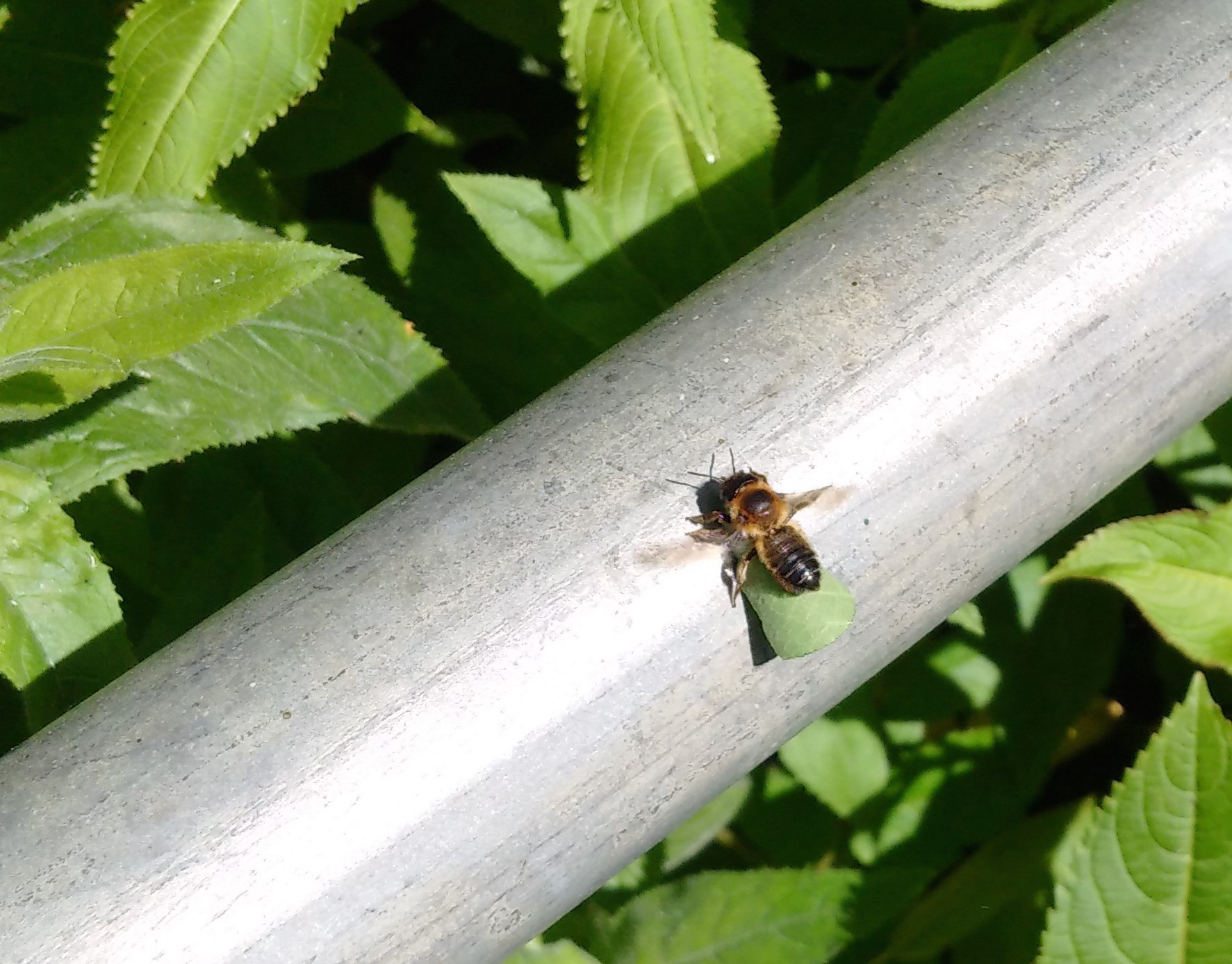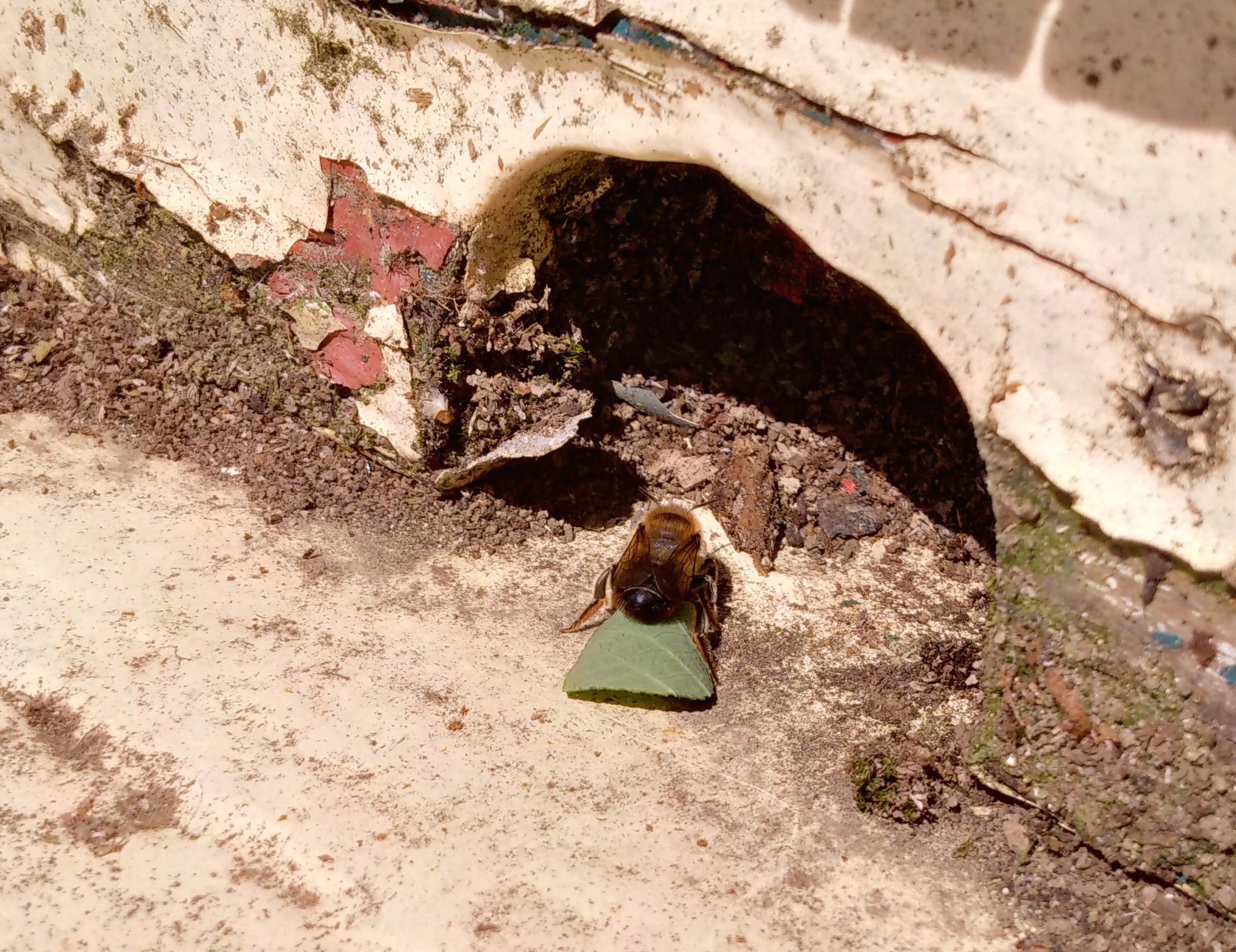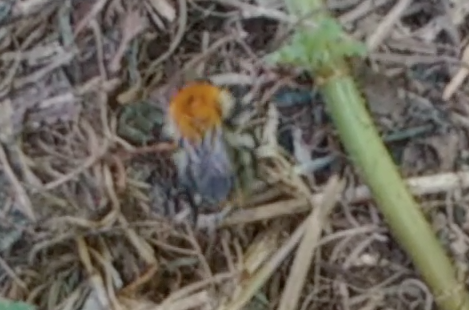I’ve had my beehive for over two weeks. It’s full of honeybees, and getting fuller. In that time my neighbours have had two nests of very different varieties of wild native bee: leafcutters and bumblebees. They’re not camera-shy.
Leafcutter bees
My neighbour spotted bees coming and going from a piece of wooden furniture. She thought that they were honeybees because they were coming and going and looked very honeybee-like. But these ones were different: they had a flash of green.

On closer inspection these turned out to be little discs of leaf which they were cutting and bringing into their nest. Leaf-cutter bees.

Apparently they roll these up into tubes and glue them to make cells (where honeybees would use wax) to raise brood.
They were flying into a hole in a very small piece of wood (just a few inches across). There was probably one coming in or out every minute. We couldn’t be sure how many bees there were in there, but were certainly a lot of leaves.

You can read more about leafcutter bees.
Bumblebee nest
A couple of weeks later, my neighbour was scything some long grass and suddenly felt himself beset by bees. I went to take a look.
What I found was one of the most extraordinary things I think I’ve seen. A nest of bumblebees (which I had incorrectly thought to be solitary bees) in some dried vegetation.
Initially I didn’t believe it could be a nest, but as I poked around more and more emerged. And when I disturbed the wrong bit of ground they made a collective buzz of annoyance that I recognise so well from honeybees. You can hear it at about 10 seconds in the video.
As soon as I realised it was a nest I left them alone (but kept filming). Who knows what structures they had built under there? Wikipedia has a great photo of a bumblebee nest.
What creatures. They have bright orange backs and stripy abdomens.
The Bumblebee Conservation Trust has a good page on common bumblebee identification (and the less common ones).
 I think these are Common Carders, Bombus pascuorum.
I think these are Common Carders, Bombus pascuorum.
You can read more about my bees. They’re a bit less wild.